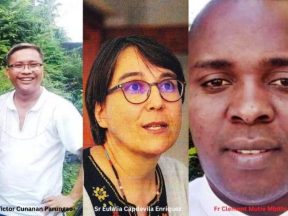Carlo Acutis. “God’s influencer”.
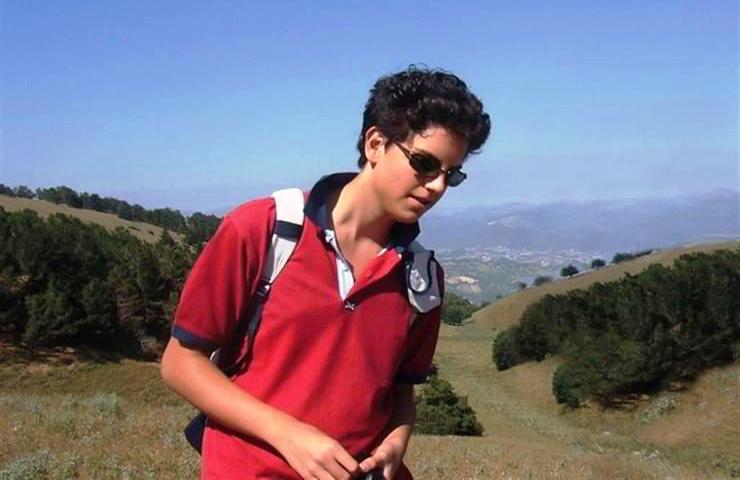
The life of Carlo Acutis, short and intense, has been an inspiration to many people around the world. He will be canonized on 27 April.
“I am happy to die because I’ve lived my life without wasting even a minute of it doing things that wouldn’t have pleased God”. A few days later, on 12 October 2006, he died at the age of 15 from leukaemia. Many young people remembered him for his cheerfulness, computer skills, and deep devotion to the Eucharist, which became the core of his life. Carlo was born in London on 3 May 1991, the son of Andrea Acutis and Antonia Salzano. He was baptized on 18 May 1991 at Our Lady of Dolours Church, Chelsea. The parents had worked in London and Germany before Acutis was born. In September of that year, the family returned to their native Italy, where they lived in Milan.
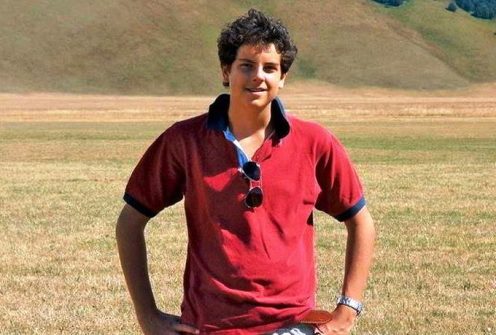
Many friends from his school days remember him as a bright, happy and generous child. Courtesy: carloacutis.com
When Carlo was four years old, his maternal grandfather, Antonio Salzano, died. A few days before his death, Carlo was present when his grandfather received the anointing of the sick. It is said that the grandfather appeared to him in a dream and asked to be prayed for. Shortly after the grandfather’s death, while his grandmother was taking care of him, Carlo put on his coat and asked to be taken to church. When she asked him why, Carlo said he wanted to pray for his grandfather, who, the child explained, “had gone to see Jesus.” When Carlo showed an interest in Catholic religious practice, his questions were answered by the family’s Polish babysitter.
At the age of seven, Carlo received his First Communion at the convent of Sant’Ambrogio ad Nemus, Milan. He was a frequent communicant, and often attended Eucharistic Adoration. Once he said: “The more Eucharist we receive, the more we become like Jesus, so that on this earth we will have a foretaste of heaven”. He was confirmed on 24 May 2003 at Santa Maria Segreta Church.
A typical teen in many ways, he grew up in what most would consider an ordinary family: his parents worked, he went to school, he played sport and he loved watching films and playing video games.
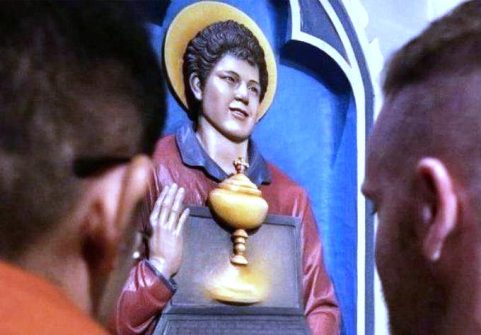
“The more Eucharist we receive, the more we become like Jesus, so that on this earth we will have a foretaste of heaven”. Courtesy: carloacutis.com
After school he volunteered his time with the city’s homeless and destitute, often using his own pocket money to buy sleeping bags for those sleeping rough. Many friends from his schooldays remember him as a bright, happy and generous child.
Carlo was growing up in a society experiencing an explosion of the Internet and the rise of social media sites, which radically changed the way young people accessed information and communicated with one another. Carlo saw this as a perfect platform to draw attention to faith and the Eucharist. He was skilled in the English language and had a natural aptitude for science and technology. Soon he learnt how to use the latest programmes for building websites, making films and networking with people on the other side of the world.
For Carlo, the Internet was “a space for dialogue, for getting to know others, for sharing and for mutual respect”. He encouraged the use of mass media as a means to serve the Gospel, to reach as many people as possible and to show them the beauty of friendship with the Lord. To this end, he undertook to organize an exhibition of the most important Eucharistic miracles that have occurred in the world.

He encouraged the use of mass media as a means to serve the Gospel. Courtesy: carloacutis.com
Carlo meticulously researched “about 136 eucharistic miracles that occurred over the centuries in different countries around the world, and have been acknowledged by the Church” and created a collection of virtual panels with text and photographs recounting each event in an online museum. Besides creating a website to house this virtual museum, he helped create panel presentations that have been exhibited around the world. He was convinced that this online museum of miracles, now translated into a dozen different languages, would attract young people back to the Church.
But, on 12 October 2006 his immune system collapsed. He developed leukaemia, the blood cancer that led to his painful death.
On the road to sainthood
Not long after his death, the first reports of miracles attributed to Carlo’s intercession were recorded. His friends shared stories and personal memories through documentaries and websites. In July 2018, Pope Francis declared him ‘venerable’, putting Carlo on the path to sainthood.
The first miracle recognised by the Vatican’s Medical Council of the Congregation for the Causes of Saints occurred in Brazil, where a mother, through her Internet searches, learned of him and requested the intercession of Carlos Acutis on behalf of her ill son Mattheus.
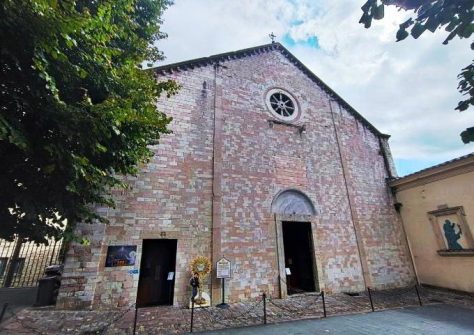
Santa Maria Maggiore, Assis, Acutis’s burial place. He developed leukaemia, the blood cancer that led to his painful death. CC BY-SA 4.0/Sottobosco90
Mattheus suffered from a severe pancreatic condition that made eating difficult. His mother, Luciana Vianna, asked Carlo to intercede and then took Mattheus to a prayer service. When they went home, Mattheus was able to eat. His condition was cured. The miracle led to the Carlos’s beatification, which took place in October 2020.
On 23 May 2023, the Vatican recognised another miracle attributed to Blessed Carlo Acutis. This miracle concerned a woman from Costa Rica. On 8 July 2022, Liliana prayed at Blessed Carlo’s tomb in Assisi, leaving a letter that described her plea. Just six days previously, on 2 July, her daughter Valeria had fallen from her bicycle in Florence, where she had been attending university.
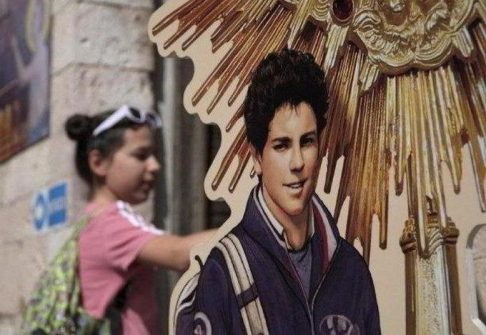
Carlo researched about 136 Eucharistic miracles that have occurred over the centuries in various countries around the world. Courtesy: carloacutis.com
She had sustained severe head trauma and required craniotomy surgery and the removal of the right occipital bone to alleviate pressure on her brain, with doctors indicating a very low chance of survival.
Liliana began praying immediately to Blessed Carlo Acutis, and on 8 July, Liliana made a pilgrimage to his tomb in Assis. That same day, the hospital informed her that Valeria had begun to breathe spontaneously. The next day, she began to move and partially regain her speech.
On 18 July, a CAT scan proved that her haemorrhaging had disappeared, and on 11 August Valeria was moved to rehabilitation therapy. She made quick progress, and on 2 September Valeria and Liliana made another pilgrimage to Assisi to thank Blessed Carlo for his intercession. On 27 April of this year, Carlo will be canonized in St. Peter Square, in Rome. (Open Photo: Courtesy: carloacutis.com)
Philip Chiba



